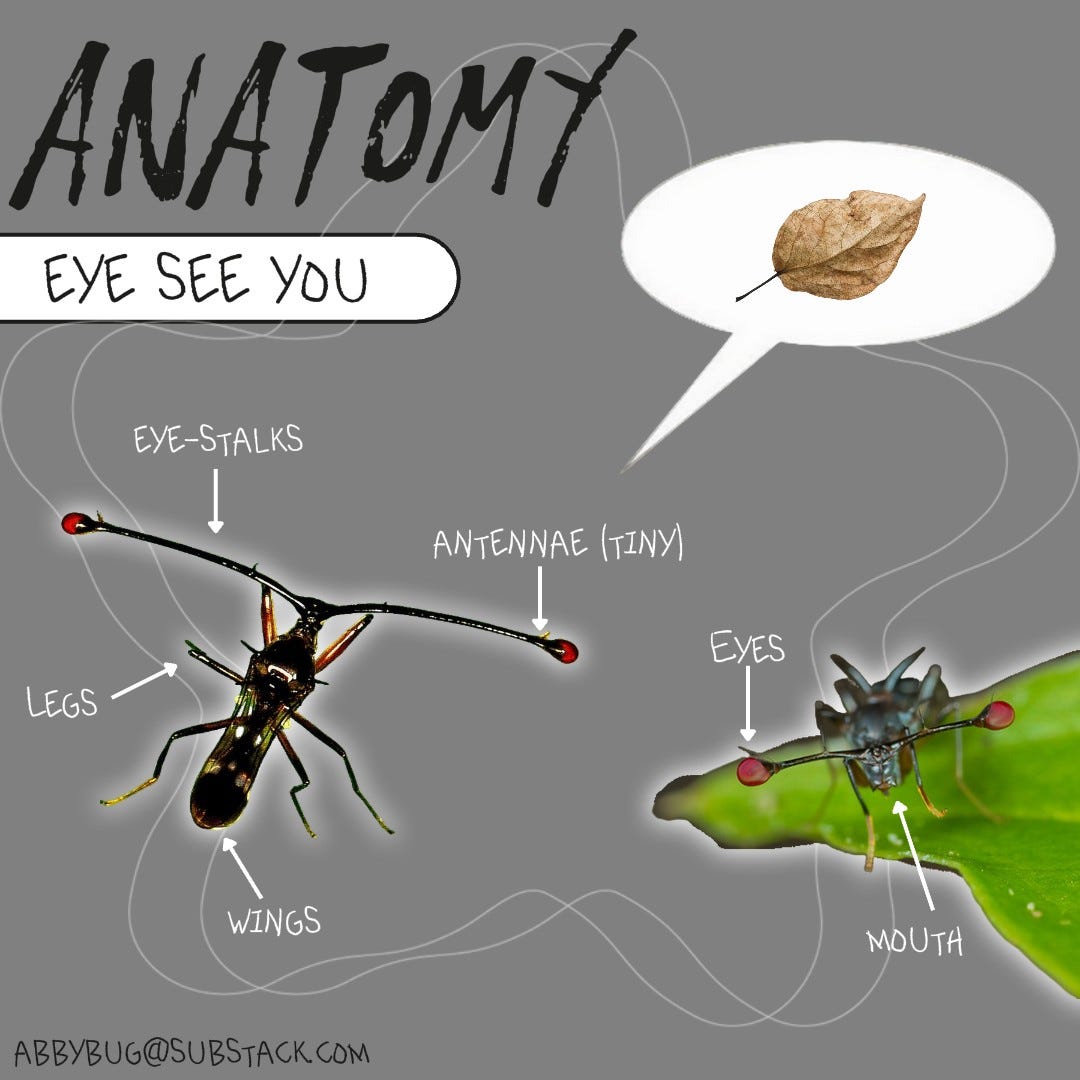In April of this year, a $5 billion lawsuit was filed against Google, accusing the search giant of tracking its user’s data without permission. It is fair to say that society now has a heightened sense of awareness about being watched and their right to privacy. I would like to bring to your attention something more concerning than tech giants, that is watching us all as a true depiction of the phrase “bug-eyed”. Introducing, the Stalk-eyed fly. I mean look at him. With eyes like that and the word “stalk” in its name? No-one is safe.
Physical Description
Scientifically known as “Diopsidae”, this fly family is known for its bold eyestalks protruding from their heads. They grow up to 4-12mm in length, with their eyestalks having the potential to be longer than their bodies! Male stalk-eyed flies have much longer eyestalks than females, which has been directly linked to the female mating choices and their desired characteristics with their partners. Both in the wild and in captivity, male stalk-eyed flies with longer eyestalks were observed with more female flies surrounding them than those with shorter eyestalks… don’t worry guys, we’ve clearly evolved past this trait as humans #bodypositivity. Although the ladies are infatuated by long eyestalks, they are also considered to be an aerodynamic handicap, as streamlined head shapes make a LOT more sense for flying.
Life Cycle
Stalk-eyed flies have a transformation process that is truly a sight to behold. As mentioned previously, female flies have a preference for male flies with wide eyestalks. Males compete with each other by directly facing one another, in order to compare the length of their eyestalks. After choosing a mate and laying eggs, it takes 2 weeks for the eggs to develop into a pupae, before hatching. Out crawls the baby stalk-eyed fly, who has a very soft exterior. Now here’s where things get strange. Air bubbles are blown through the mouth and up into the head in order to elongate its eye stalks. Calling them airheads would be an understatement. I highly recommend watching this short clip to see this unique process.
Male stalk-eyed flies are also known for having more physical fights in order to impress a potential mate, by wrestling with its eyestalks against another male. Female flies sit by and watch until a winner has made itself worthy, and is now allowed to mate with any females nearby.
Diet
Larvae feed on plant materials and sap, and when they are old enough they indulge in delicacies such as dead animals as well.
Location
Research is limited about the full extent of their habitats, though sightings have been noted in primarily humid locations such as south east Asia, forests in Africa and south east America. Australia is home to a different family of stalk-eyed flies, Platystomatidae (signal flies). These flies are not nearly as impressive in length compared to Diopsidae, so I can only hope that one day I will find myself as gobsmacked as a female stalk-eyed fly by a critter who’s eyes are longer than his body length.







I never knew these existed. Really informative article.
relevant bug